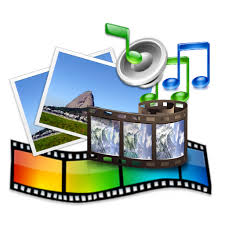An Effective Technology-Integrated Approach for Experiential Learning
What is Digital Storytelling: Definition

It is “a form of short narrative, usually a personal narrative told in the first person, presented as a short movie for display on a television or computer monitor or projected onto a screen” (Davis, 2005), which is a mixture of graphics, music, text, recorded audio and animation (Robin, 2006)
An overview about Digital Storytelling: What is Digital Storytelling?
You may also like to reference this elaborate version: Collaborative Digital Storytelling: An effective Technology-Integrated Approach for Experiential Learning
Why Is Digital Storytelling Important in Education
With the rapid development of information technology, the integration of information and communication technologies into learning and teaching becomes necessary.
Characteristics of Digital Storytelling:
- Engaging! – Children are immersed in a context rich in resources, with the power of media technologies!

- Flexible! – Children are free to learn in a virtual environment, regardless of time and place!

- Independent! – Children are free to monitor their learning, which facilitates student-centered learning strategies and fosters their self-efficacy!

- Keeping Abreast of the Trend! – Children can improve their digital literacy and technological skills, which are the key skills in the age of digitalization and information technology!

More reading materials
Banaszewski, T (2002). Digital storytelling finds its place in the classroom. MultiMedia Schools, 9 (1), 32-35.
Gills, F. V. (2005, June). Potential applications of digital storytelling in education. Paper presented at 3rd Twente Student Conference on IT. Retrieved from https://wwwhome.ewi.utwente.nl/~theune/VS/Frank_van_Gils.pdf
Gonzalez, M. (2014). The effect of embedded text-to-speech and vocabulary ebook scaffolds on the comprehension of students with reading disabilities. International Journal of Special Education, 29 (3), 111-125.
Kim, M. (2010). The effects of storytelling on adult English language learners. Linguistic Research, 27 (3), 447-473.
Robin, B. R. (2005). Educational uses of digital storytelling: Main directory for the educational uses of digital storytelling. Instructional Technology Program. University of Huston. Retrieved from http://faculty.coe.uh.edu/brobin/homepage/Educational-Uses-DS.pdf
Robin, B. R. (2008). Digital storytelling: A powerful technology tool for the 21st century classroom. The College of Education and Human Ecology, The Ohio State University, 47 (3), 220-228.
Sadik, A. (2008). “Digital storytelling: A meaningful technology-integrated approach for engaged student learning.” Educational Technology Research and Development, 56 (4), 487-506.
Yang, Y. T. C., & Wu, W. C. I. (2012). Digital storytelling for enhancing student academic achievement, critical thinking, and learning motivation: A year-long experimental study. Computers & Education, 59, 339-352.
Practical Skills in Making Good Digital Stories
As mentioned before that Digital Storytelling is a very broad concept and useful approach adopted in learning and teaching, diverse skills are involved when doing Digital Storytelling: from choosing the appropriate storybooks, recording the stories with dramatic narration skills, to editing the videos with animations and sound effects.
Sharing in text by students (Faculty newsletter)
- Coni Qiu: Book selection: How to pick stories suitable for target students?
- Vicky Chen: Story adaptation: How to adapt stories to best fit the purpose?
- Rosetta Law: Storytelling skills: What skills can be used to tell stories in a more interactive way?
- Anna Xia: Technical skills: Video-making tools and skills
Video sharing:
Here, you can find our video-producers’ thoughts and tips about producing Digital Storytelling videos:
Voices from participants – How to produce high-quality digital stories by pre-service teachers
(A video will be provided later)
Integrate Positive Values and Digital Storytelling into English Language Education
- A sample Digital Storytelling video produced by our participant Rosetta
 A Cool Kid Like Me!
A Cool Kid Like Me! - Lesson plan for using this video developed by Camilla LinLesson Plan – A Cool Kid Like Me!
- Recommended Children’s storybooks with positive psychology